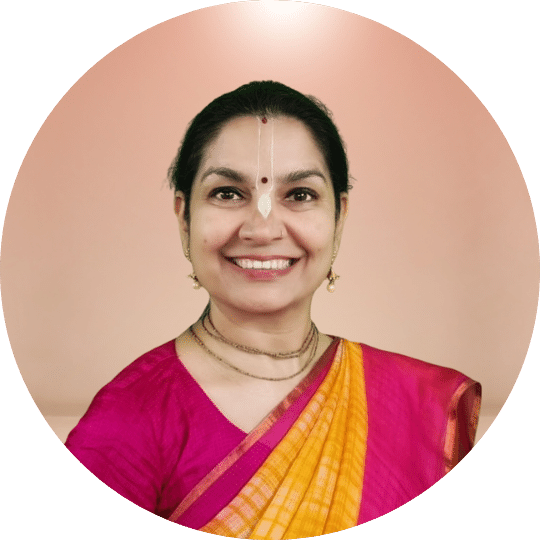About Us

Srila Prabhupada
His Divine Grace A.C. Bhaktivedanta Swami Prabhupada (1896-1977) is widely regarded as the foremost Vedic scholar, translator, and teacher of the modern era. He is especially respected as the world's most prominent contemporary authority on bhakti-yoga, devotional service to the Supreme Person, Krishna, as taught by the ancient Vedic writings of India. He is also the founder-acharya of the International Society for Krishna Consciousness.Srila Prabhupada, as he's known to his followers, translated and commented on over eighty volumes of the Vedas' most important sacred bhakti texts, including the Bhagavad-gita—a concise handbook for understanding the purpose and goal of human life—and the multi-volume Srimad-Bhagavatam—an epic biography of Krishna, Krishna's avatars, and His many devotees throughout the history of the universe.Srila Prabhupada's own spiritual master, Srila Bhaktisiddhanta Sarasvati Thakur, was the leading proponent of Krishna consciousness in India during the early part of the twentieth century. He specifically taught the philosophy of Chaitanya Mahaprabhu, the divine avatar who revived Krishna-bhakti all over India in the 1500s. When Srila Bhaktisiddhanta first met the young man later known as Srila Prabhupada - in Calcutta in 1922 - he urged him to preach Chaitanya Mahaprabhu's message of Krishna consciousness throughout the English-speaking world.After forty years of struggling within India to carry out his guru's order, while maintaining family and business responsibilities, Srila Prabhupada boarded a steamship bound from Calcutta to New York City in 1965. At age sixty-nine, with forty rupees and a trunk of his Bhagavatam commentaries - the first ever in English - his aim was to introduce "India's message of peace and goodwill" to the western world. During the last twelve years of his life, Srila Prabhupada would inspire thousands of Westerners and Indians to devote their lives to Krishna consciousness, launching one of the fastest-growing spiritual movements in the history of the world.Many scholars and professors who met him and became familiar with his work continue to use Srila Prabhupada's books as standard university texts, and regard him as a genuine, realized, and scholarly teacher of bhakti. His authoritative yet down-to-earth presentation of Vedas continues to inspire a worldwide audience.With the help of his students, he founded the International Society for Krishna Consciousness (ISKCON). ISKCON is popularly known as the "Hare Krishna" movement, due to its members' widespread practice of chanting the Hare Krishna mantra in public. Srila Prabhupada intended ISKCON to facilitate the association and education of bhakti-yoga practitioners, and his followers continue to spread that mission.

ISKCON Chennai
ISKCON Chennai is located off the East Coast Road at the Hare Krishna land, Sholinganallur. The deities worshipped in the temple include those of Radha Krishna Lalita Vishaka, Jagannath Baladev Subhadra, and Sri Sri Nitai Gauranga.ISKCON has more than 500 centers all over the world. The Chennai chapter of ISKCON inaugurated the present gorgeous temple at Sholinganallur on April 26, 2012. It has a lot of unique features. Find the chakras that line the body of the temple-purusha on the steps, see the avatars of the Lord governing the eight directions in attractive glass paintings and more!Spread over an area of over 1.5 acres, the temple is constructed on five levels. There is a 7,000 sq ft temple hall on the first floor, an auditorium for cultural and spiritual programmes on the ground floor and a prasadam hall in the basement.In the temple hall, there are three teak-wood altars which house the deities of Lord Krishna with His consort Radharani and their assisting friends Lalita and Vishaka, Lord Chaitanya with Lord Nityananda and Lord Jagannath, Baladeva and Subhadra. These deities have been sourced from Jaipur and Orissa. Designed under the guidance of His Holiness Bhanu Swami, the temple has imbibed various attributes from Vedic scripture and is inspired by the Pallava and Kalinga architecture.The entrance to the temple is marked by the representation of the universe or the bhu-mandala on the marble floor. According to the cosmology of ancient Vedic puranas, the universe is described as series of circular islands surrounding a central pillar called Mount Meru. The design on the floor at the entrance depicts the same universal pattern. There is also a life-like statue of a cow feeding its calf at the portico.The primary purpose of the temple to transform the material self-centred identity into a spiritual identity of unconditional love is graphically represented by means of a magnificent chandelier that projects various colours on the walls and ceiling. The chandelier has 500 Himalayan quartz crystals supposedly meant to intensify the spiritual energy in the temple.The temple also visually displays various vastu shastra features.
Instructors

Amarendr Gaur Das
Amarendr Gaura Das is a Bhakti Yogi, motivator, and spiritual lifestyle coach, dedicated to making the timeless wisdom of the Bhagavad Gita accessible and relevant. A management graduate from one of India’s top institutions, he previously headed a division of an educational firm before choosing to dedicate his life to spiritual service.He is the co-founder of studygita.com, a visionary initiative that brings the teachings of the Bhagavad Gita to diverse audiences in a simple, practical, and relatable format. His leadership and passion have driven the development of transformative courses like Applied Bhagavad Gita, Gita Made Easy, and Discover Yourself, widely appreciated in corporate settings, youth forums, temples, and the broader society.A certified Bhakti Shastri and trained educator, Amarendr Gaura Das has been practicing Bhakti Yoga for over two decades, focusing especially on youth empowerment. Troubled by the growing disconnect from values in modern society, he has been coaching urban youth with spiritual tools for self-excellence, helping many overcome destructive habits and find purpose and direction in life.Together with his wife, he volunteers full-time at ISKCON Chennai, giving up a lucrative career to serve society. He plays a key role in temple management, ensuring the smooth day-to-day functioning and spearheading future development projects, including major construction works. He has also completed the Leadership Education and Development Systems (LEADS) program.Known for his calm demeanor, pleasing personality, and great sense of humor, Amarendr Gaura Das continues to touch lives with his clear thinking, heartfelt communication, and dedication to sharing spiritual truths that uplift, inspire, and transform.

Sukirti Madhavi Devi Dasi
Sukirti Madhavi Devi Dasi, is a visionary Lifestyle Architect, psychologist, and spiritual educator, known for her work in making Vedic wisdom accessible and relevant. She came in touch with ISKCON in 1997 through Bhagavad Gita As It Is by Srila Prabhupada, which transformed her life and ignited her mission to share timeless truths with others.Along with her husband, she co-founded studygita.com—an initiative dedicated to presenting the Bhagavad Gita in a simple, practical, and relatable way. She has designed impactful courses like Gita Made Easy, Bhakti Yoga Made Easy, Gita Mastery Course, Devotion in Action, and Worship at Home, which have empowered thousands of seekers to apply spiritual principles in daily life.At ISKCON Chennai, she leads initiatives in spiritual education and community engagement, including teen and adult programs, cultural events, media outreach, and temple management. She conducts the Bhakti Shastri and ISKCON Disciple Courses, serving under the mentorship of stalwart scholars like HH Bhanu Swami.Her expertise also extends to corporate seminars and college outreach, where she bridges ancient wisdom with modern challenges. With over two decades of experience as a psychologist and counselor, she has served a wide range of individuals—including teenagers, homemakers, professionals, and inmates at Tihar Jail—helping them navigate difficulties and live with purpose.Through her dynamic, heart-centered approach, Sukirti Madhavi Devi Dasi continues to inspire transformation, guiding individuals to lead lives rooted in trust, respect, and love.

